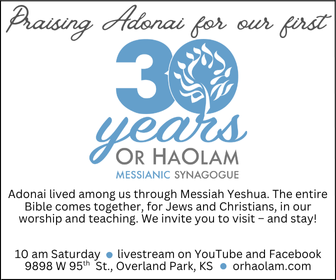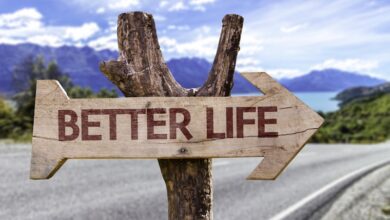Isolation, quarantine, executive orders and the constitution

Overwhelmed by all the news coming out about the new coronavirus, including isolation, quarantine, executive orders and the like? This article attempts to place the coronavirus pandemic and recent executive orders by local authorities into the context of science as presented by the Centers for Disease Control and the First Amendment of the Constitution. First, some definition of terms:
The Centers for Disease Control (CDC) has issued the definitions of two terms we have been hearing about a lot lately: isolation and quarantine:
“Isolation separates sick people with a contagious disease from people who are not sick.”
“Quarantine separates and restricts the movement of people who were exposed to a contagious disease to see if they become sick.”
In Executive Order 20-24, to go into effect March 17, Kansas Governor Laura Kelly exempted religious gatherings from the prohibitions of mass gatherings “as long as attendees can maintain appropriate social distancing.”
Then on March 24, Governor Kelly signed an executive order limiting crowd size to 10, “which replaced the previous order limiting mass gatherings to 50 persons.”
On Thursday April 9, a panel of Kansas legislators (seven in all, four Republican) overturned the governor’s order.
At this point, to make a long story short, Governor Kelly sued the Legislature, took the case to the Kansas Supreme Court and won her case. The Supreme Court met virtually on Saturday morning before Easter Sunday, and the news came out Saturday evening, just in time for it to hit before people made plans to attend Easter worship services. It was also reported that the Supreme Court “sidestepped” the question of constitutionality by arguing that the legislative panel did not have authority to overturn the governor’s order.
READ: Kelly to move Kansas into ‘modified Phase 2’ of recovery plan
Although there is no mention of executive orders in the United States Constitution, we might be able to conclude that the same rights provided in the law of the land (the U.S. Constitution) might rightly apply to state and local governments, as well, because the Constitution stipulates that federal and state governments should work together (https://courses.lumenlearning.com/boundless-politicalscience/chapter/federalism-in-the-constitution/)
Two constitutional amendments particularly apply to the current coronavirus crisis.
The First Amendment to the United States Constitution states that:
“Congress shall make no law respecting an establishment of religion, or prohibiting the free exercise thereof; or abridging the freedom of speech, or of the press; or the right of the people peaceably to assemble, and to petition the Government for a redress of grievances.”
The Tenth Amendment states that:
“The powers not delegated to the United States by the Constitution, nor prohibited by it to the States, are reserved to the States respectively, or to the people.”
These are the two constitutional amendments that have been on people’s minds lately since the onset of this coronavirus pandemic and ones to keep in mind as we consider the events taking place in our nation and world.
Going back to the definitions of “isolation” and “quarantine”, you should isolate if you’re sick; quarantine for a period of time (say, 14 days) if you were exposed, to see if you get sick. However, the terms “isolation” and “quarantine” have become more or less interchangeable, judging from all the GIFs on social media, for example, discussing all the activities people are engaging in while they are in “quarantine” and “isolation” because of the coronavirus.
But, again referring to the CDC’s definition of “isolation” and “quarantine,” if you have not been exposed and you are not sick, one might ask, why are you isolating or quarantining? The presumed reason for everyone to stay inside, and the stated reason for “stay-at-home” or “shelter-in-place” orders, is that we have also heard that many people with Covid-19 have no symptoms at all but are still capable of transmitting the disease. This makes practically everybody on the planet a potential carrier and possibly carrying a highly contagious disease.
The possibility that virtually everybody might be carrying the disease, then, seems to have become the justification for cities, counties and states to determine what businesses are essential and which are not, to close bars, restaurants, gyms, craft stores, beauty salons and barber shops. It has shut down our economy to a degree of severity not seen since the Great Depression and has increased the jobless rate to 10 percent – all in the name of “public health and safety.” But has all this really been necessary?
We have heard that if you have been exposed you might be sick and not know it, because many people with the virus are not going to be symptomatic for approximately 14 days after exposure. As a result of all the danger surrounding us by association with other people, then, we have now been required to “maintain social distancing” (three feet recommended by the WHO – World Health Organization – and six feet as recommended by the CDC).
According to the WHO https://www.who.int/emergencies/diseases/novel-coronavirus-2019/technical-guidance/naming-the-coronavirus-disease-(covid-2019)-and-the-virus-that-causes-it, the name of the new coronavirus that causes the disease Covid-19 is: severe acute respiratory syndrome coronavirus 2 (SARS-CoV-2). Coronaviruses, in general, are at the root of the common cold and a variety of flu viruses.
“Coronaviruses are a large family of viruses that can cause illnesses ranging widely in severity. The first known severe illness caused by a coronavirus emerged with the 2003 Severe Acute Respiratory Syndrome (SARS) epidemic in China. A second outbreak of severe illness began in 2012 in Saudi Arabia with the Middle East Respiratory Syndrome (MERS).” — From Science Daily (https://www.sciencedaily.com/releases/2020/03/200317175442.htm).
Numerous scientific studies about the new coronavirus and Covid-19 (the disease caused by the coronavirus) indicate that those at highest risk for serious illness or death are those with co-morbidity – other or underlying illnesses, and that, in general, this risk increases with age.
Diseases occurring alongside Covid-19 include obesity, diabetes, hypertension and cancer. Other underlying causes include cardiovascular diseases, hepatitis B, respiratory diseases such as chronic obstructive pulmonary disease, immune-deficiencies and chronic kidney diseases.
Based on this information, one might ask why have all people been forced into “isolation” and “quarantine”? Schools have been closed until the end of the school year, and some fear may not even be able to open in the fall! People have lost their jobs. The economy appears to be on its last legs. But why?
Early on, the CDC reported that 80 percent of people who contract Covid-19 recover and even have relatively mild symptoms. Symptoms may include headache, fever, body aches, dry cough, shortness of breath and lack of the sense of smell. Since, as stated earlier, most people with serious or fatal cases of Covid-19 have major underlying causes, why did at least one news network report in mid-April that “Coronavirus is now the leading cause of death in the US”?
In April, the CDC issued new instructions for how doctors are to report the cause of deaths where patients tested positive for this new coronavirus.
Some reports are that if a deceased person had tested positive for the coronavirus, then it would now be listed as the “underlying cause.” Others have said it would be listed as the “immediate” cause. Now, reports are that coronavirus will be listed as the cause of death on the death certificate if the coronavirus is “possible” or “probable.”
You can read the instructions yourself to see the rather complex form the doctors have to follow by clicking on the following link: https://www.cdc.gov/nchs/data/nvss/vsrg/vsrg03-508.pdf, but if you hear how many thousands of people are dying of Covid-19, not knowing that the disease does not usually kill people all by itself, then you would logically have reason to be alarmed, as, apparently, very many people are during this time.
Why was it necessary to shut the whole country down during this virus? And why do mayors and governors now suddenly have the right to shut down churches and limit the numbers who can attend, and is this even really necessary? Can’t people follow the guidelines and use common sense? Wash their hands, maintain social distancing and stay home if they are sick?
What is the justification for shutting down the whole country when the CDC has reported that this disease has a 97% (or better) recovery rate? Why did the experts falsely predict exponential numbers of deaths in recent weeks (from 100 to 200 million+) and attribute every death of anyone who tested positive (to Covid-19) to the coronavirus, even when there were clearly underlying causes such as obesity, diabetes, hypertension and other diseases combined with advanced age? And why does not the media report more about how many people are recovering, how they are recovering and what they are going to do differently to prevent disease in the future or even another pandemic?
When the stay-at-home order for Shawnee County first came out, word was that failing to follow the original order to close the churches (deemed “non-essential”) amounted to committing a Class-C misdemeanor and you would pay $1,000 or spend 30 days in jail if you went to church. It had now become against the law to go to church.
In Kansas, a couple of studies showing that an “outbreak” had occurred after church meetings created a panic and much controversy among religious believers. But how were the experts to trace the origin of the disease among the churchgoers? Was there a way of tracing the exposure to the disease to Walmart or Lowes, for example?
What possible motives might there be for distorting the facts in the news?
Dr. Scott Jensen, a Minnesota family physician who is also a Republican state senator, told “The Ingraham Angle” Wednesday(April 8, 2020) that the Centers for Disease Control and Prevention’s (CDC) guidelines for doctors to certify whether a patient has died of coronavirus are “ridiculous” and could be misleading the public.
“Right now Medicare has determined that if you have a COVID-19 admission to the hospital you’ll get paid $13,000. If that COVID-19 patient goes on a ventilator, you get $39,000; three times as much. Nobody can tell me, after 35 years in the world of medicine, that sometimes those kinds of things [have] impact on what we do.”
Karin Wahl-Jorgensen, professor and director of research development and environment, School of Journalism, Cardiff University said, “The prominence of fear as a theme in reports of the coronavirus suggests that much of the coverage of the outbreak is more a reflection of public fear than informative of what is actually happening in terms of the spread of the virus.”
The website www.Worldometers.info reports that “it is too early to be able to put a percentage on the mortality rate figure.” Still, earlier reports were that somewhere between 80 to 97 percent of the people who get Covid-19 get light symptoms or even no symptoms. Some have even suggested that many of us have already had the illness and didn’t even know it! Fatality rates vary regionally, listing New York, D.C. and New Orleans (some reports say New York, Detroit and New Orleans) as the most dangerous “hot spots.”
But don’t base your understanding of the coronavirus on this report or any other one report you read, see or hear. As free citizens we can all be researching what is really happening. Read the medical research articles. One notion that is not trending now is that as a nation we have been unhealthy for a long time, and maybe there is something we can do to protect ourselves from disease, build up our immune systems and prevent serious illnesses originating with coronaviruses.
One article from a professor at MIT said the pandemic was long expected. If it was long expected, why had the public not heard about it, and why was the public not prepared for it? During this crisis, maybe we could use some of the time on our hands to become better informed citizens.
–Carolyn Cogswell







